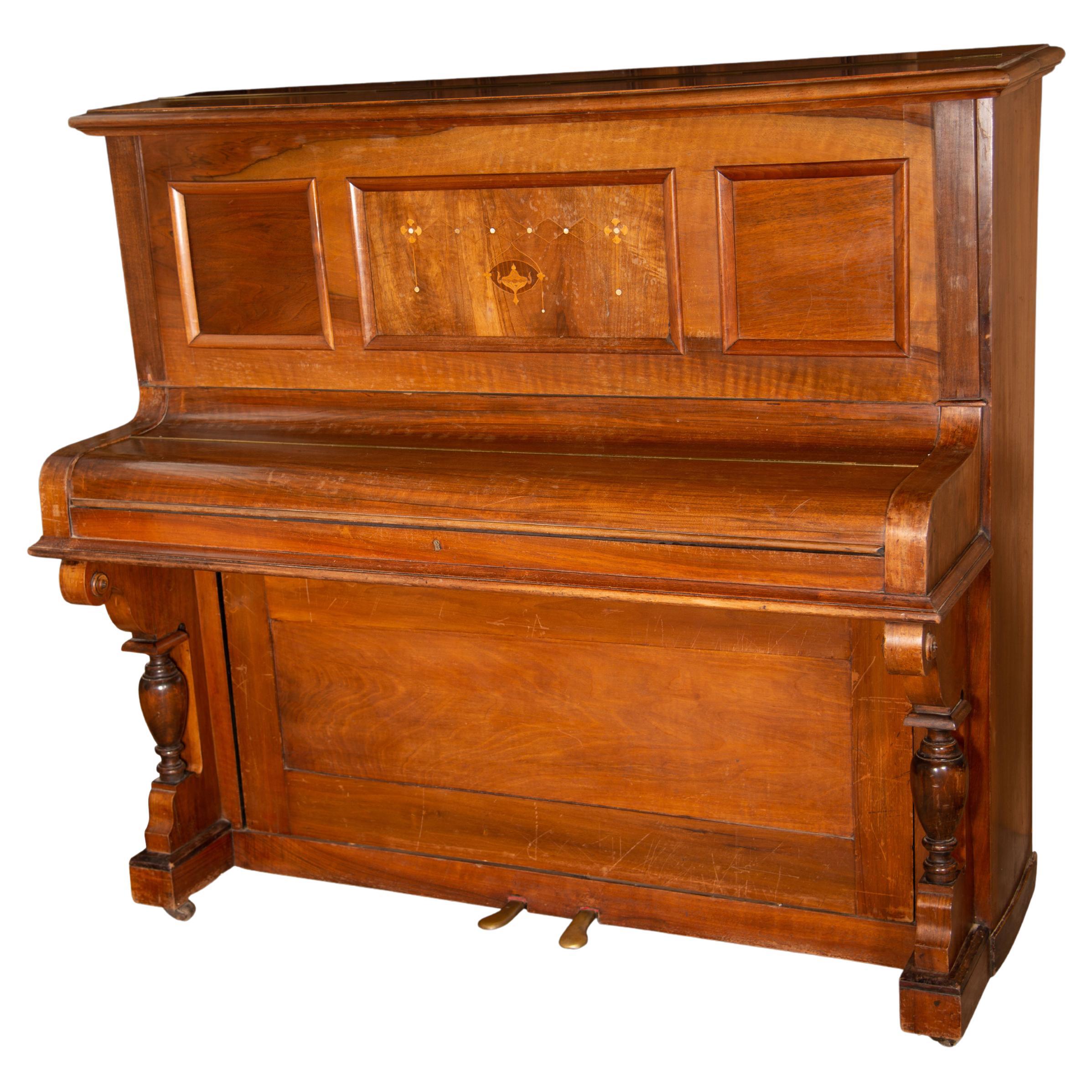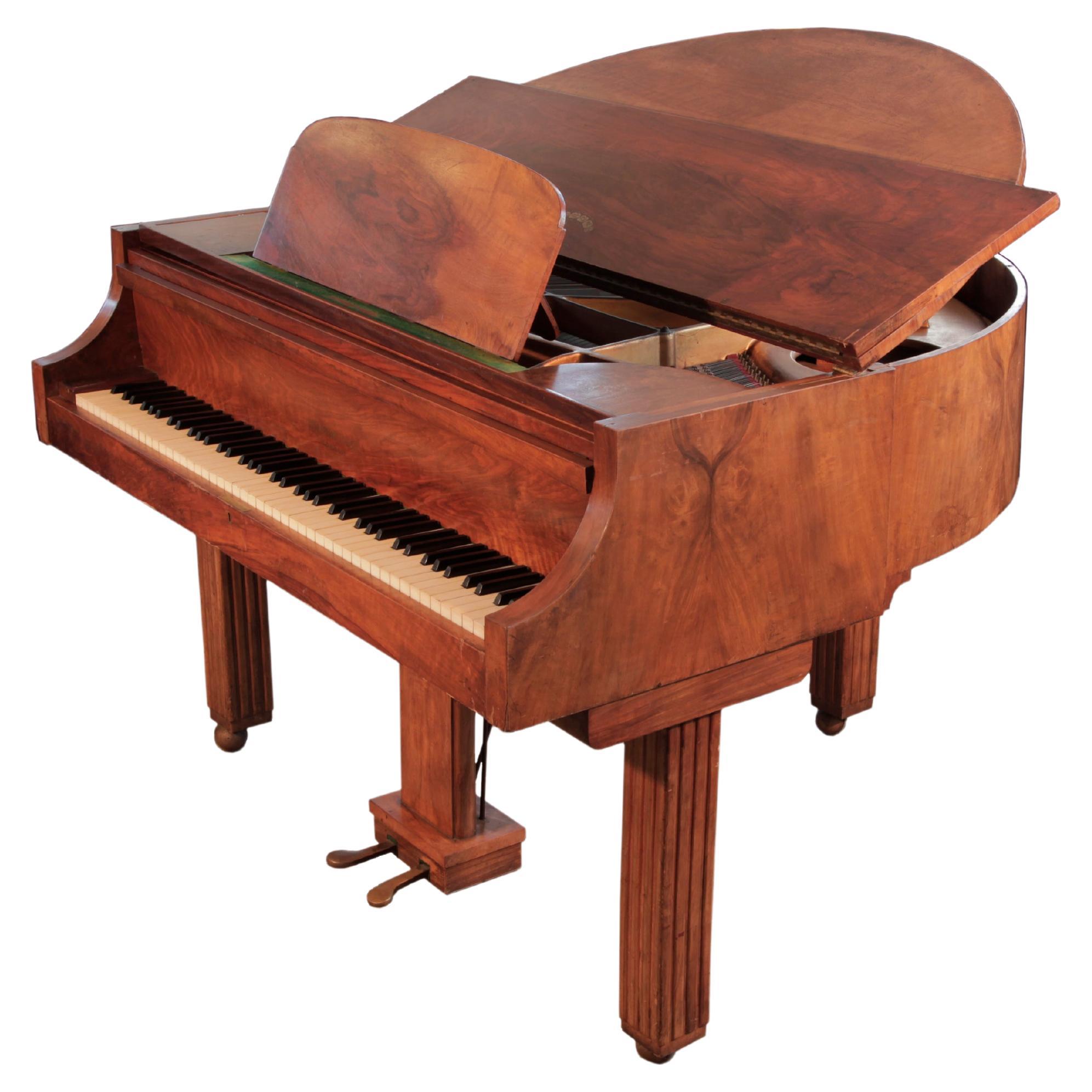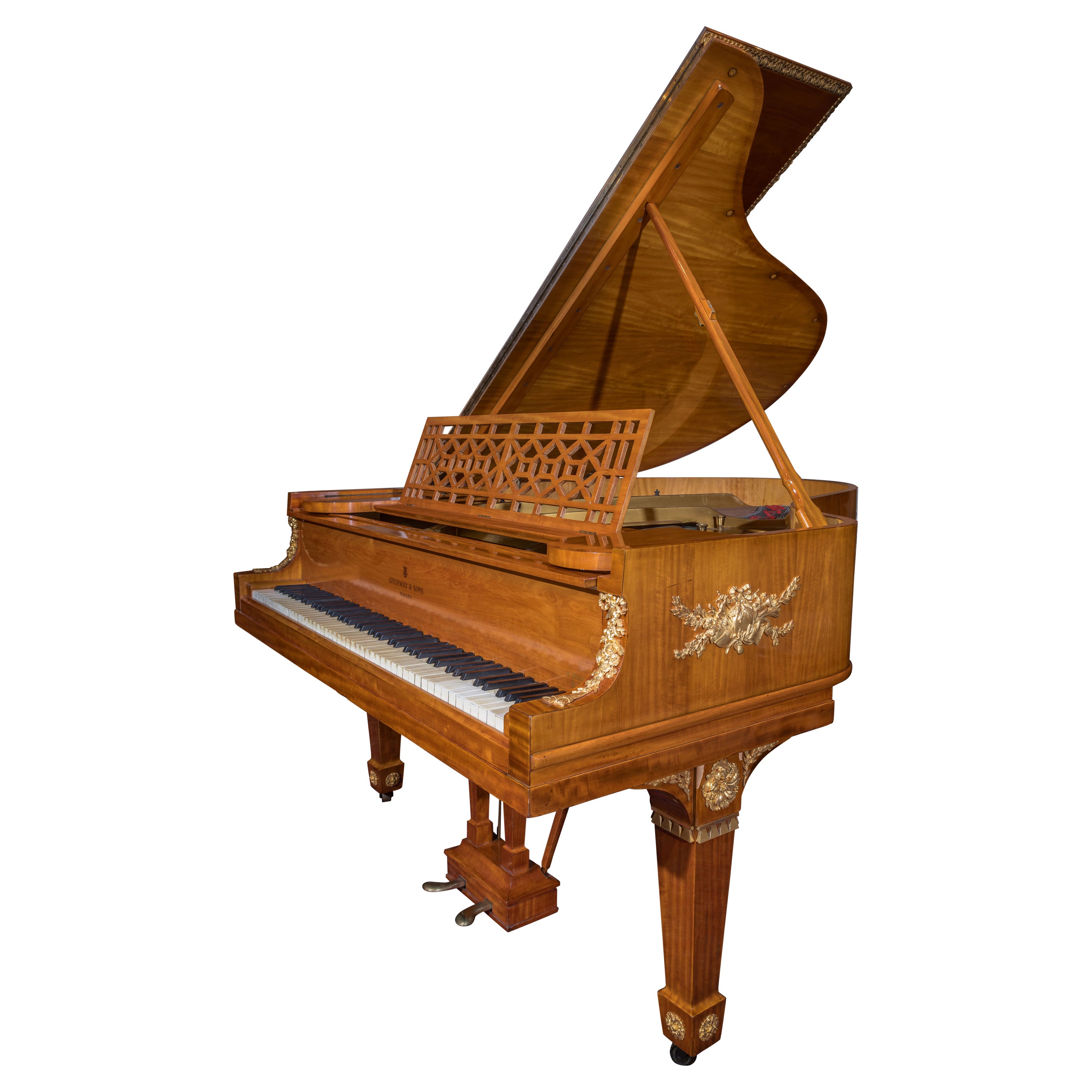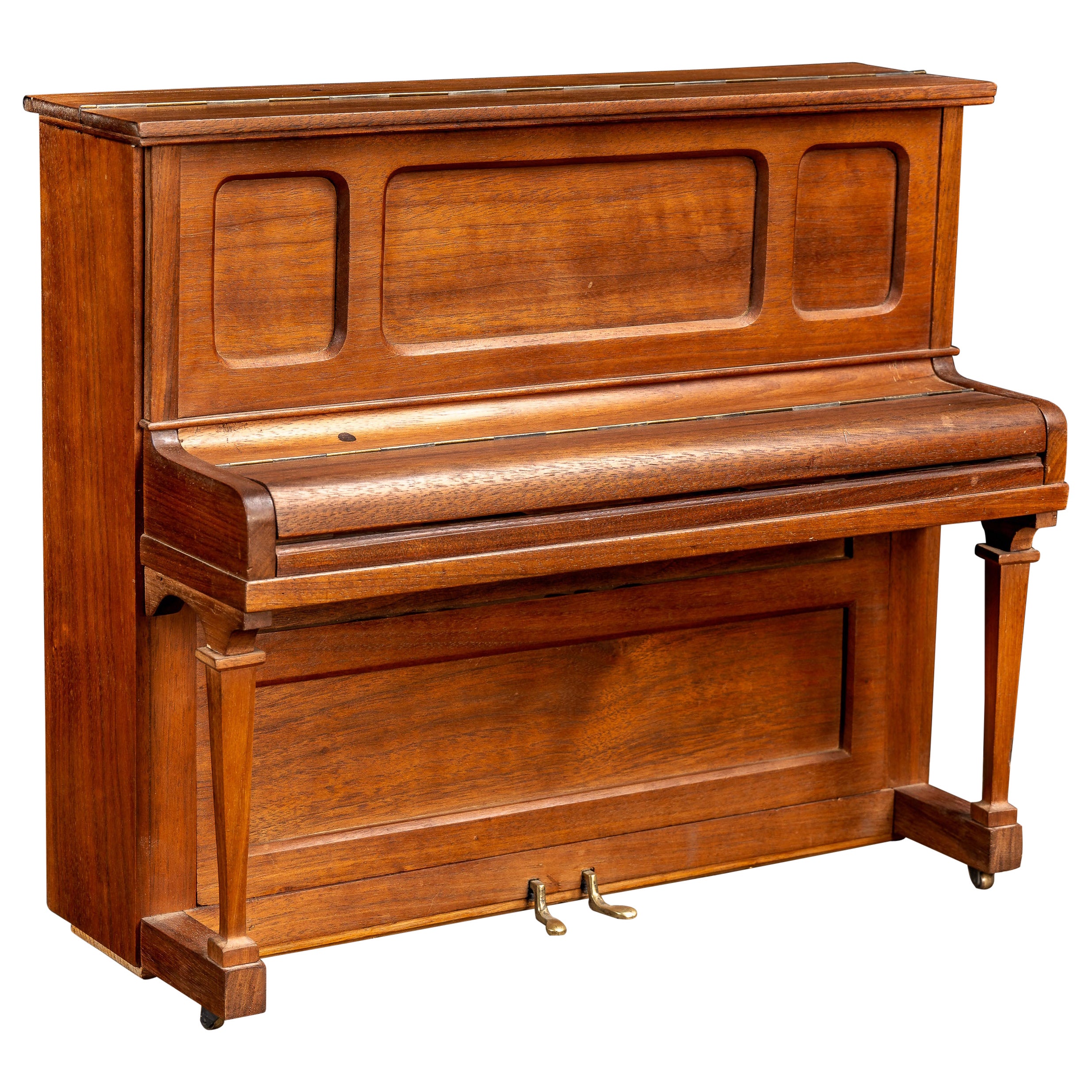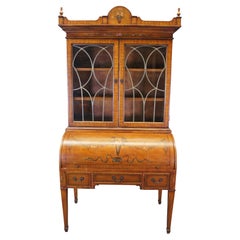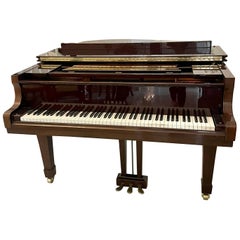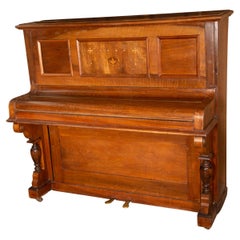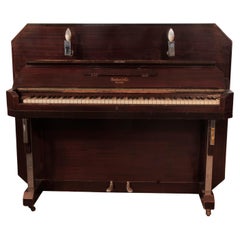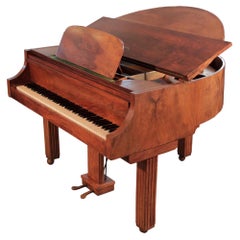Items Similar to Antique 1915 Mahogany Chicago Cable Company Carolina Inner Player Upright Piano
Want more images or videos?
Request additional images or videos from the seller
1 of 13
Antique 1915 Mahogany Chicago Cable Company Carolina Inner Player Upright Piano
$2,800
$3,50020% Off
£2,133.17
£2,666.4720% Off
€2,459.63
€3,074.5420% Off
CA$3,918.54
CA$4,898.1820% Off
A$4,378.32
A$5,472.9020% Off
CHF 2,290.35
CHF 2,862.9320% Off
MX$53,692.23
MX$67,115.2920% Off
NOK 29,266.28
NOK 36,582.8520% Off
SEK 27,752.19
SEK 34,690.2320% Off
DKK 18,357.56
DKK 22,946.9520% Off
Shipping
Retrieving quote...The 1stDibs Promise:
Authenticity Guarantee,
Money-Back Guarantee,
24-Hour Cancellation
About the Item
Antique Victorian player piano by The Cable Company of Chicago which features a Carolina Inner-player. Circa 1915.
Includes: I Love Paris and Oh Lady Be Good by Max Kortlander, Hey There and Mack the Knife by J Lawrence Cook, Cherry Pink & Apple Blossom White by Sid Laney, If You Knew Susie Fox Trot, Bye Bye Blackbird Fox Trot, Loving You Has Made Me Bananas by Dick Watson, and two unmarked.
Dimensions:
55"h x 63" x 30"
- Dimensions:Height: 55 in (139.7 cm)Width: 63 in (160.02 cm)Depth: 30 in (76.2 cm)
- Style:Edwardian (In the Style Of)
- Materials and Techniques:
- Place of Origin:
- Period:1910-1919
- Date of Manufacture:1915
- Condition:Wear consistent with age and use. A few of the keys don't work, could use a tuning, not familiar with player mechanism, but were able to get it to rewind in reverse.
- Seller Location:Dayton, OH
- Reference Number:Seller: 404651stDibs: LU5343238313902
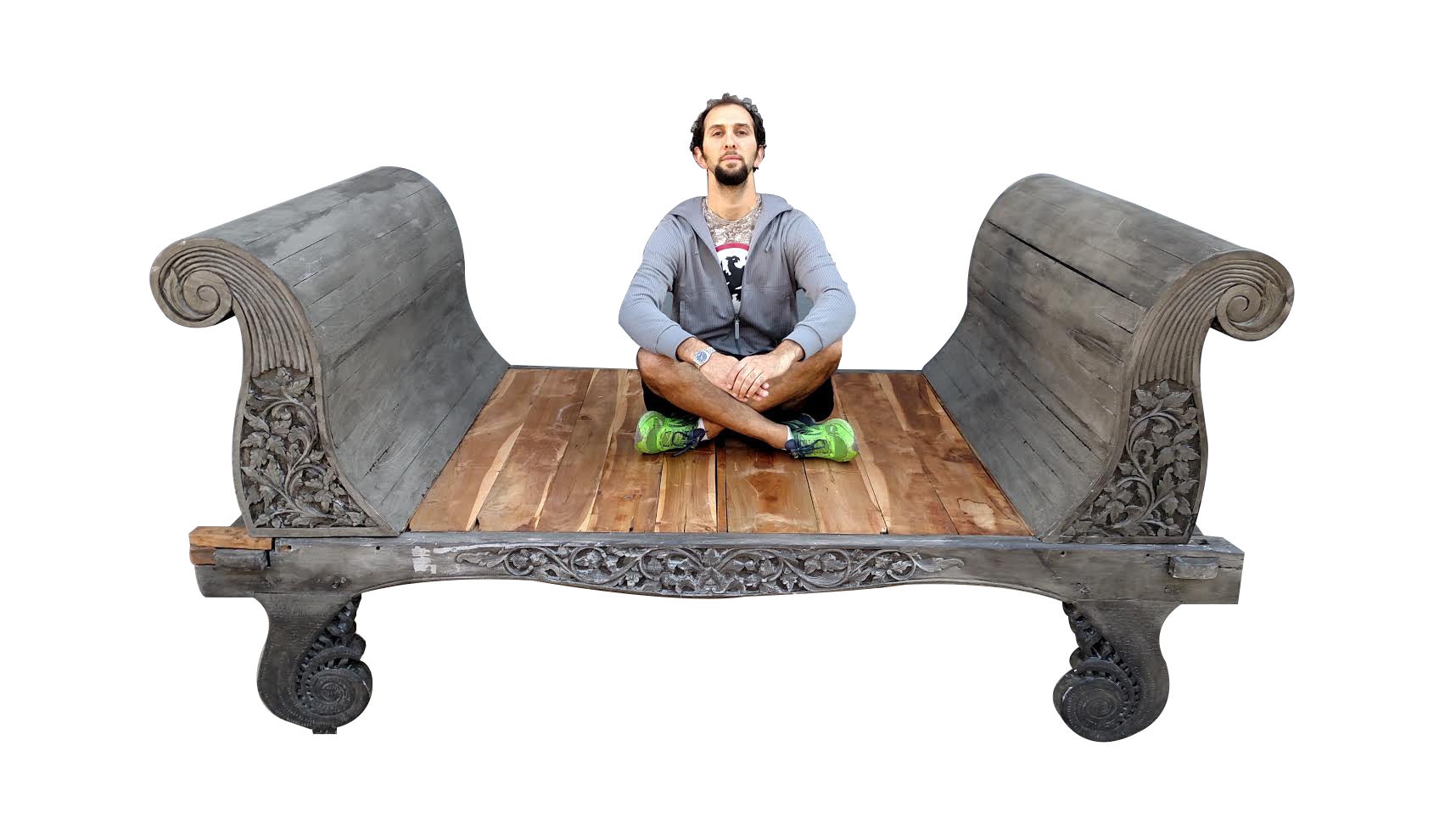
About the Seller
5.0
Platinum Seller
Premium sellers with a 4.7+ rating and 24-hour response times
Established in 2010
1stDibs seller since 2020
1,585 sales on 1stDibs
Typical response time: <1 hour
- ShippingRetrieving quote...Shipping from: Dayton, OH
- Return Policy
Authenticity Guarantee
In the unlikely event there’s an issue with an item’s authenticity, contact us within 1 year for a full refund. DetailsMoney-Back Guarantee
If your item is not as described, is damaged in transit, or does not arrive, contact us within 7 days for a full refund. Details24-Hour Cancellation
You have a 24-hour grace period in which to reconsider your purchase, with no questions asked.Vetted Professional Sellers
Our world-class sellers must adhere to strict standards for service and quality, maintaining the integrity of our listings.Price-Match Guarantee
If you find that a seller listed the same item for a lower price elsewhere, we’ll match it.Trusted Global Delivery
Our best-in-class carrier network provides specialized shipping options worldwide, including custom delivery.More From This Seller
View AllRare Antique 1901 Steinway Model B Rosewood Grand Piano Louis XV Rococo Restored
By Steinway & Sons
Located in Dayton, OH
Fully Restored 1901 Steinway & Sons Model B Louis XV Baroque Rococo Grand Piano – Serial Number 99151, Full 88 key keyboard.
The most exquisitely d...
Category
Early 20th Century American Louis XV Musical Instruments
Materials
Fruitwood, Rosewood
$400,000 Sale Price
20% Off
Antique American Sheraton Mahogany Drop Leaf Gate Leg Dining Table Console 46"
Located in Dayton, OH
Charming early 19th century Sheraton gateleg table. Made from mahogany with two "D" form dropleaves. the table is supported by Turned, tapered and ribbed legs leading to metal cast...
Category
Antique Early 19th Century Sheraton Drop-leaf and Pembroke Tables
Materials
Mahogany
$1,172 Sale Price
20% Off
Antique 19th Century American Sheraton Cherry Drop Leaf Dining Console Table 40"
Located in Dayton, OH
Early 19th Century American Sheraton Drop Leaf Table. Made from cherry with a hand dovetailed and inlaid drawer within the frieze. The table features contoured corners and is suppo...
Category
Antique Early 19th Century American Sheraton Drop-leaf and Pembroke Tables
Materials
Cherry
$1,400 Sale Price
20% Off
Adams Style Mahogany Half Cylinder Secretary Writing Desk Hutch Curio 92"
Located in Dayton, OH
A very large and impressive vintage Adams style half cylinder secretary desk / hutch featuring a mahogany finish with upper bookcase curio cabinet with fretwork doors supported by a ...
Category
Late 20th Century Adam Style Secretaires
Materials
Mahogany
$2,400 Sale Price
20% Off
Antique Thomas Turner Manchester English Mahogany Writing Desk Library Table
By Thomas Turner
Located in Dayton, OH
An antique Thomas Turner English Victorian era writing desk. Made from solid mahogany with a tooled red leather inset top. Features 2 hand dovetailed drawers within the frieze, squar...
Category
Antique Late 19th Century Victorian Desks and Writing Tables
Materials
Mahogany
$2,400 Sale Price
20% Off
Kindel Winterthur Collection Mahogany Goddard Townsend Secretary Writing Desk
By Kindel Furniture
Located in Dayton, OH
Kindel Winterthur Collection Mahogany Goddard Townsend Blockfront Secretary Writing Desk. Made from mahogany with a high sheen finish. This exception ...
Category
Late 20th Century American Federal Secretaires
Materials
Mahogany
$5,600 Sale Price
20% Off
You May Also Like
Yamaha Baby Grand Quality Mahogany Piano Model C2
Located in Suffolk, GB
Quality Yamaha baby grand piano with an overstrung iron frame, frame and sound board in perfect condition, mahogany case standing on square tapering legs wi...
Category
Late 20th Century English Musical Instruments
Materials
Other
$15,210 Sale Price
20% Off
Upright piano. Towards the beginning of the 20th century.
Located in Madrid, ES
Upright piano. Towards the beginning of the 20th century.
Upright or wall piano with a wooden body with marquetry elements on the central panel of the uppe...
Category
20th Century European Other Musical Instruments
Materials
Other
Art Deco Barker Upright Piano Chrome Mahogany Geometric Case Styling
Located in Leeds, GB
A 1930's Barker upright piano with an Art Deco style mahogany case. Cabinet features strong angular styling, evident in the chamfered corners at the top and b...
Category
Early 20th Century English Art Deco Musical Instruments
Materials
Chrome
Art Deco Strohmenger Baby Grand Piano Figured Walnut Square Legs and Lyre
Located in Leeds, GB
Art Deco style, 1945, Strohmenger baby grand piano with a polished, book-matched, figured walnut case and brass fittings. The high arched piano cheek ends with an angular square cut....
Category
Mid-20th Century English Art Deco Musical Instruments
Materials
Brass
Antique Steinway & Sons Gold Bronze & Satinwood Baby Piano Circa 1910
Located in New Orleans, LA
This piano was made in the Hamburg Steinway & Sons factory and decorated in France. It is a beautiful instrument. As with most pianos, special shipping will be needed.
Category
Early 20th Century German Musical Instruments
Materials
Ormolu
Early 20th Century John Broadwood & Sons Upright Piano Salesmans Sample
By John Broadwood & Sons
Located in Dekalb, IL
Early 1900s; John Broadwood & Sons - North Yorkshire, England
This piano salesman sample comes from one of the oldest continuous piano manufacturers in the world. Originally establi...
Category
Early 20th Century American Models and Miniatures
Materials
Brass
More Ways To Browse
Victorian Furniture Company
J Watson
Mahogany Piano
Antique Banana
Antique Upright Piano
Upright Pianos
Antique Player Piano
Rosewood Piano
Harp Musical Instrument
Record Player Radio
Speakers Vintage Stereo
Steinway And Sons Piano
Swiss Cylinder Music Box
19th Century Grand Piano
Italian Record Player
Tube Radios
Brionvega Rr126
Used Phonograph Records

